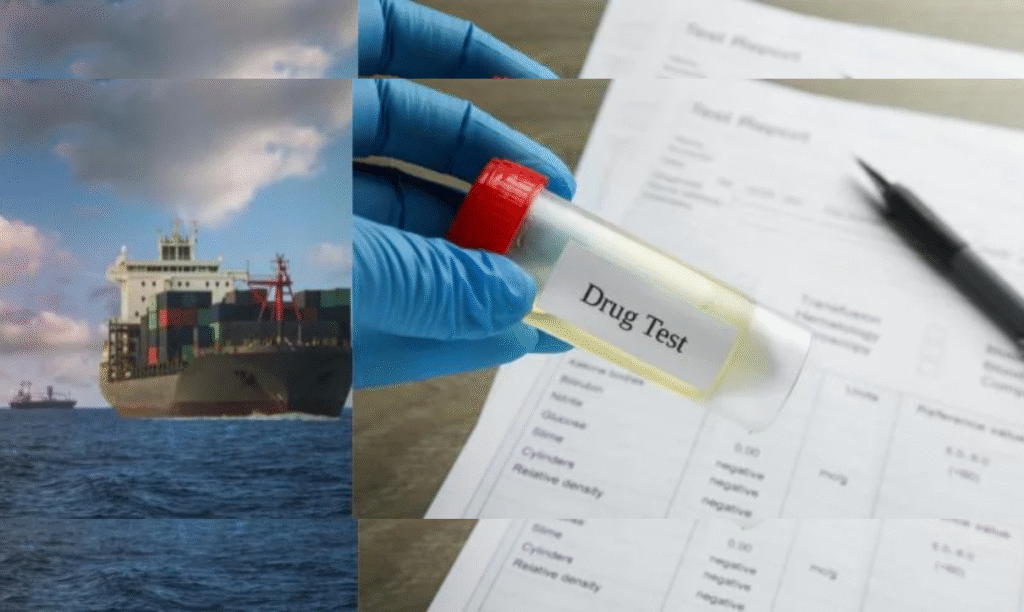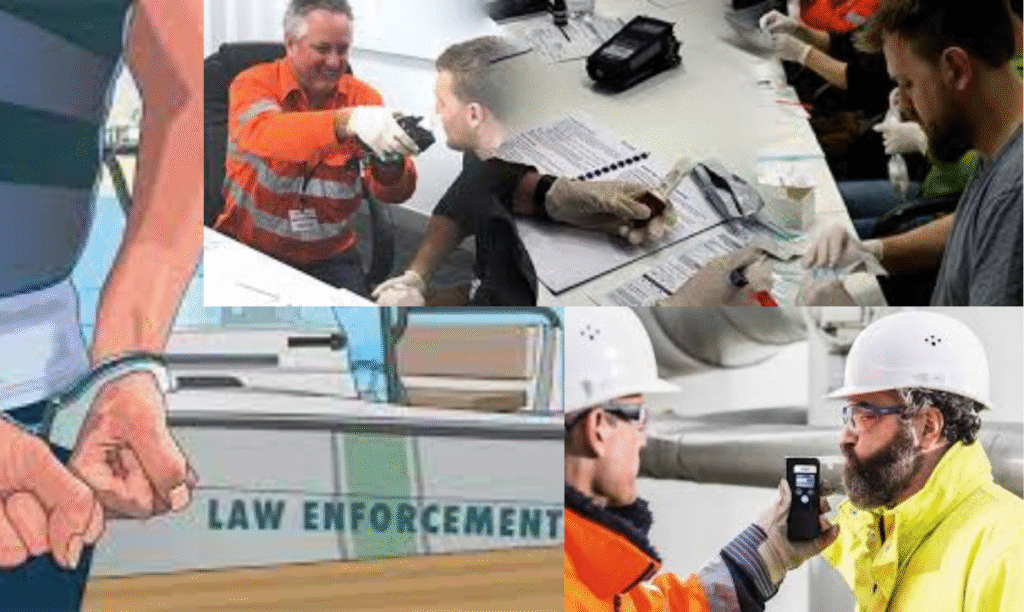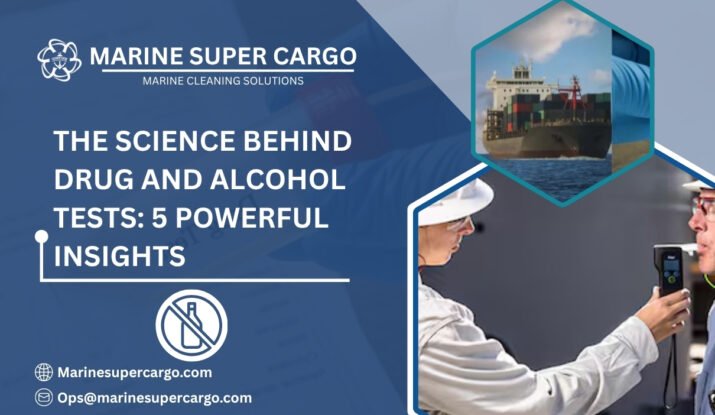Understanding the science behind drug and alcohol test procedures is like unlocking the compass technology that guides ships through uncertain waters. For ship owners, operators, and managers, knowing the science behind drug and alcohol tests helps explain how these systems reliably detect impairment, protect crews, and support compliance.
The science behind drug and alcohol tests lies in analyzing biological markers—such as saliva, breath, urine, or hair—that reveal whether an individual is fit for duty. By learning the science behind drug and alcohol tests, businesses can see how accuracy and consistency reduce risks, prevent costly accidents, and improve efficiency.
Ultimately, the science behind drug and alcohol tests transforms policy into a proactive safety tool, strengthening workplace trust and resilience.
What Is Drug and Alcohol Testing Science?
The science behind drug and alcohol tests is rooted in chemistry and biology, analyzing bodily samples to detect substances that indicate recent or past use of drugs or alcohol. Understanding the science behind drug and alcohol tests is like inspecting the waters beneath a ship’s hull—unseen but critical for safety and smooth operations.
At its core, the science behind drug and alcohol tests focuses on detecting metabolites, which are byproducts produced as the body processes drugs and alcohol. Various sampling methods—urine, saliva, blood, and hair—are used to capture accurate results. The reliability of the science behind drug and alcohol tests depends on timing, sample type, and the sensitivity of testing instruments.
Ultimately, the science behind drug and alcohol testing transforms routine screenings into a precise, essential tool for workplace safety, compliance, and operational efficiency. Learn more about the Surveyor’s role during hull cleaning operations.

Common Testing Methods Explained
Understanding the primary testing methods helps clarify why each is chosen in different situations:
- Urine testing: Most common due to ease and good detection window.
- Breath testing: Primarily for alcohol, offering instant results.
- Blood testing: Highly accurate, used for confirmation and critical cases.
- Hair testing: Detects long-term substance use, like checking years of marine logs.
Each acts as a detailed scan to ensure no hidden threats escape detection.
How Accurate Are These Tests?
No test is perfect, but advances in science have made drug and alcohol testing highly reliable:
- Laboratory confirmations reduce false positives.
- Testing protocols follow standards set by authorities like the International Maritime Organization (IMO) and the International Marine Contractors Association (IMCA).
- Challenges include timing (how soon after use tests are taken) and individual metabolism differences.
✅ 4 Things to Check for Safety at Sea pic.twitter.com/dAxhJQ2i6U
— Marine Super Cargo (@Marinsupercargo) September 14, 2025
Why Testing Is Critical for Compliance and Safety
Across industries, and particularly in maritime operations, drug and alcohol testing is essential for both legal compliance and the protection of human life and the environment. International frameworks such as the MARPOL Convention and port authority regulations (see iaphworldports.org) mandate strict adherence to substance limits to prevent accidents, environmental pollution, and operational disruptions.
Understanding the science behind drug and alcohol tests builds confidence in these programs, showing that they are not merely about detecting misuse but about fostering a culture of health, safety, and responsibility. Proper testing ensures crews and workplaces remain fit, alert, and compliant.
Marine Supercargo Expands Services: Drug & Alcohol Testing for Safer Seas
Marine Supercargo, famed for its innovative marine cleaning platform, now offers professional Drug & Alcohol Testing tailored for maritime operators. This expansion ensures safer seas by helping owners, managers, and operators maintain crew health, compliance, and operational reliability.
Their services integrate cutting-edge scientific methods aligned with IMO and IMCA standards, helping just as quality hull cleaning protects a vessel’s efficiency, their testing protects crew welfare and regulatory standing.
Emerging Technologies in Testing Science
The future holds exciting innovations echoing advances in other marine technologies like robotic hull cleaning:
- Non-invasive testing methods will ease sample collection.
- Digital integration offers real-time compliance insight.
- Wearables may soon detect impairment before symptoms appear.
These advances promise more efficient safety management and operational peace of mind.

Explaining Technical Terms Simply
Metabolites are the breakdown products formed when the body processes drugs or alcohol, much like footprints left on a beach that signal recent visitors. They reveal whether a substance has been consumed, even if the original drug or alcohol is no longer present.
The detection window refers to the period after ingestion during which a test can reliably find traces of a substance, similar to how barnacles remain visible on a ship’s hull before naturally shedding.
Sensitivity measures a test’s ability to detect even tiny amounts of a substance, like sonar identifying distant or small underwater objects. Understanding these terms helps interpret testing results accurately. Also read about Powerful Reasons Drug and Alcohol Testing Matters.
Conclusion
The science behind drug and alcohol tests combines advanced chemistry and biology with practical workplace and maritime safety needs, forming the backbone of compliance, crew welfare, and operational efficiency. By understanding this science, organizations gain confidence in testing protocols, ensuring that employees or crew members are fit for duty and that workplaces remain secure. These programs are not merely regulatory obligations—they actively prevent accidents, protect lives, safeguard the environment, and shield businesses from costly disruptions or reputational damage.
A strong grasp of the science behind drug and alcohol tests allows companies to implement testing programs that are fair, accurate, and proactive. To maximize these benefits, explore trusted solutions at CleanShip.co, a partner dedicated to promoting safer seas, responsible operations, and smarter, science-backed testing programs for every organization.
FAQs:
Q1. How does science ensure drug and alcohol test accuracy?
Tests analyze metabolites in urine, blood, or hair, with confirmations eliminating false positives and following strict international standards.
Q2. What testing method detects long-term substance use?
Hair testing can reveal months of usage, offering a longer detection window than urine or blood tests.
Q3. Why are breath tests common for alcohol?
They provide quick, non-invasive, and reliable estimates of blood alcohol concentration, suitable for immediate screening.
Q4. How do drug tests support marine environmental safety?
Preventing impaired operations that can cause accidents and spills contributes to MARPOL’s pollution prevention goals.
Q5. What advances will improve future testing?
Non-invasive techniques, real-time data reporting, and wearable devices that detect impairment early promise safer, more efficient testing.


